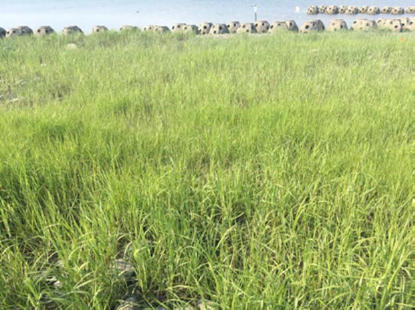Project Summary
Tidal wetlands provide a wealth of ecosystem services, including erosion control, storm protection, sequestration of carbon and habitat. This study addressed the question about whether living shorelines provide similar ecosystem services to naturally established estuarine habitats in Connecticut. A recently established living shoreline in Stratford, CT provided a unique opportunity to compare the ecosystem services of two newly planted fringing saltmarshes to nearby established fringing and meadow marshes in the same estuary of the Housatonic River. These different sites were compared to assess differences in carbon sequestration and biodiversity.
Results show that the restored fringing marshes at Stratford Point are on their way towards achieving similar levels of carbon sequestration as natural fringing marshes, but as expected by their age (four-years old and one-year-old), are still falling short. Since recovery time for marshes ranges between five and twenty-five years, these newly restored marshes are just beginning to mature.
The marsh grasses are expanding in the intertidal area of Stratford Point, suggesting that the restoration efforts are positively impacting the return of a living shoreline to the formerly heavily impacted Stratford Point coastal area. Continued monitoring of this site will chart its progress towards developing into a mature and fully functional fringing marsh, providing insight into the trajectory of recovery for living shorelines.
Product
Restored Living Shorelines: A comparison of ecosystem services relative to natural marshes
Project Team Members
- Jamie Vaudrey, UConn Marine Sciences
- Jennifer Mattei, Sacred Heart University
- Jo-Marie Kasinek, Ph.D. Candidate, UConn Marine Sciences

Reef Balls
Topic Areas
This project is a part of the following topical areas: